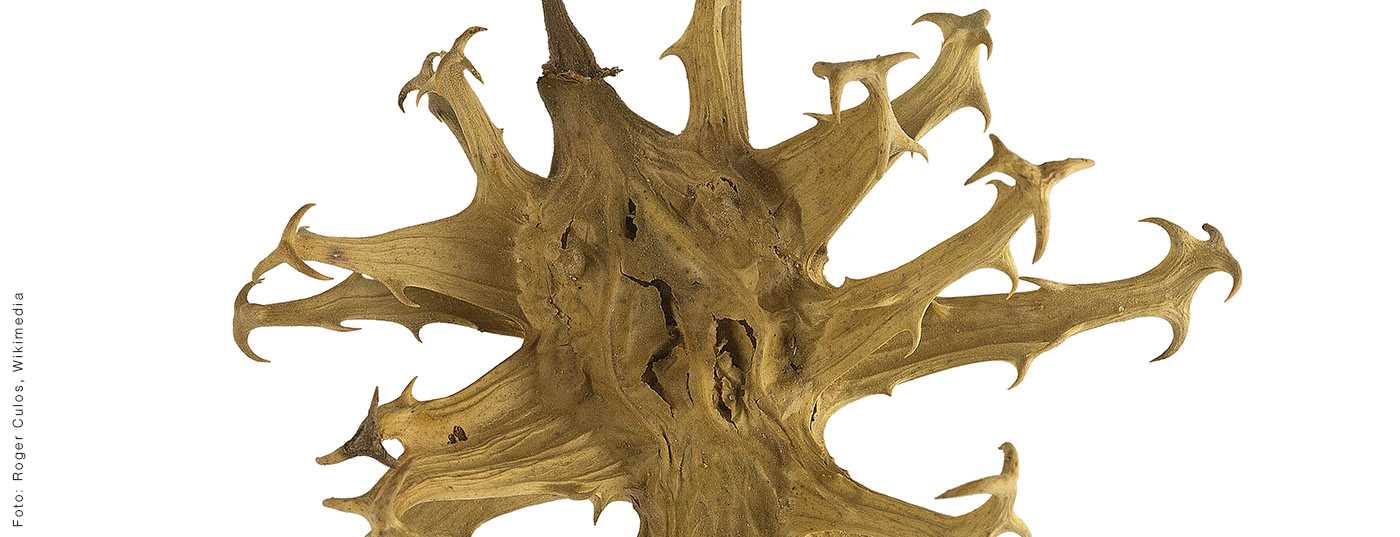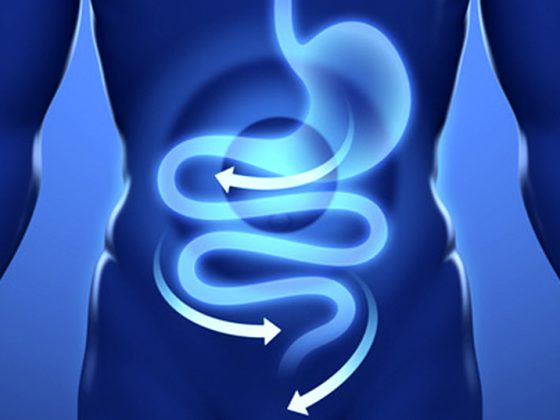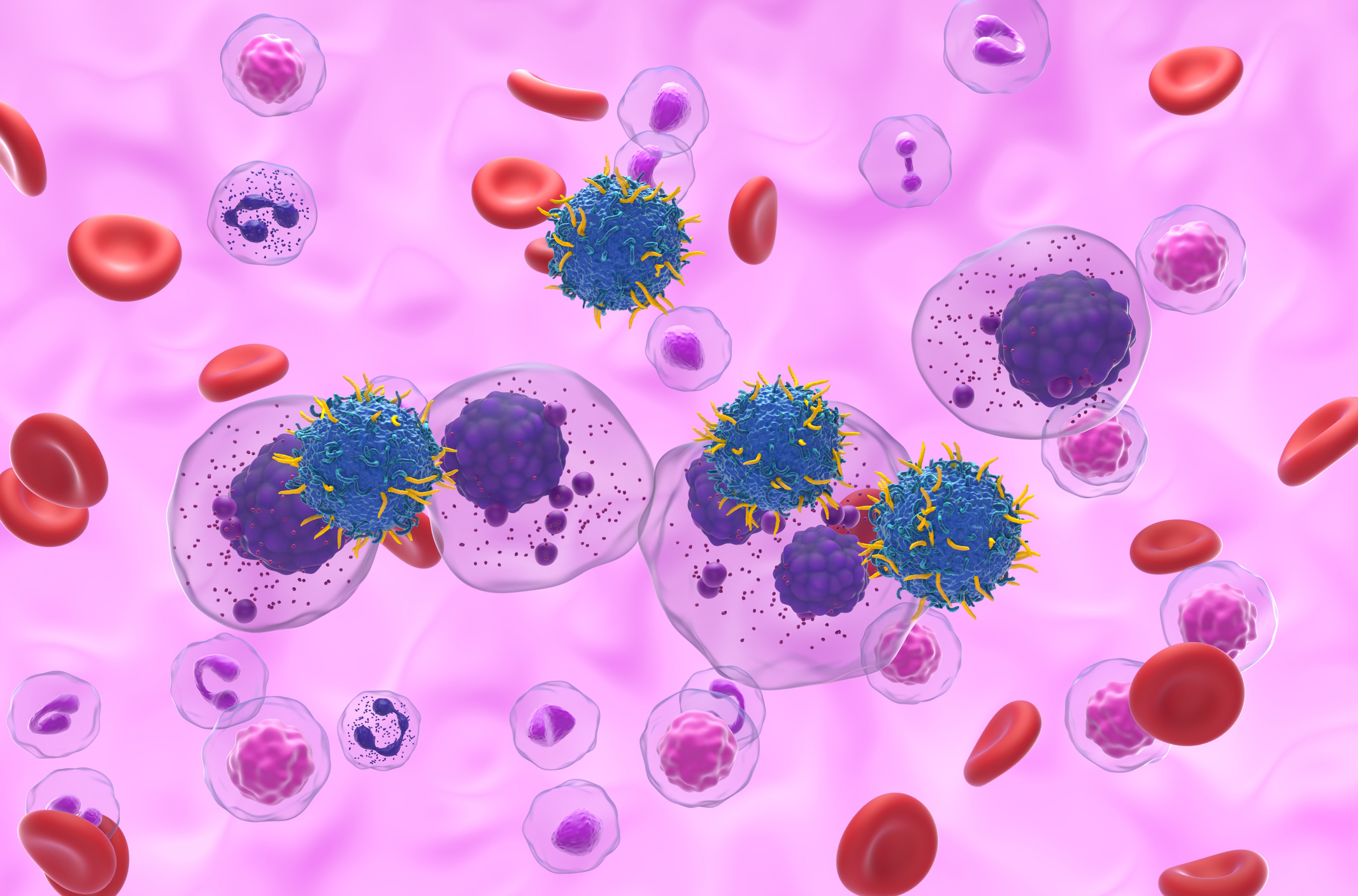About 90% of the world’s growing plants have never been studied for their possible potential as medicinal plants. Corresponding research projects can therefore always lead to success. Twenty years ago, hardly anyone outside of Africa talked about Harpagophytum as a medicinal plant. In recent years, however, numerous studies have been published that prove the effectiveness of devil’s claw (Harpagophytum procumbens), especially in rheumatic complaints.
Inflammatory diseases of the musculoskeletal system have existed as long as humans have inhabited the earth. Scientists have even proved that rheumatism was already present in dinosaurs [1]. In Hippocratic medicine, rheumatism was considered to be a defective composition of the four humors. It goes without saying that folk medicine developed strategies to alleviate complaints that we now group together under the term “rheumatism”. Various medicinal plants such as Arnica montana, Spilanthes oleracea or Symphytum officinale were and still are used to relieve injuries and inflammatory complaints of the musculoskeletal system. In the last 20 years, reports of a new medicinal plant from southern Africa, Harpagophytum procumbens (Devil’s Claw), have increasingly surfaced.
Devil’s claw: botany and pharmacology
This medicinal plant was already mentioned in the issue 6/2013 and 1/2015. Devil’s claw belongs to the Pedaliaceae family (sesame family) and grows in the steppe regions of South Africa and Namibia (Fig. 1) . The plant takes its name from outgrowths that resemble claws or talons (arrow). Herbaceous plant has large fruits, the color of which goes from purple to pink. It reaches a size of up to 1.5 m. The main constituents are iridoid glycosides, including harpagoside (Fig. 2).
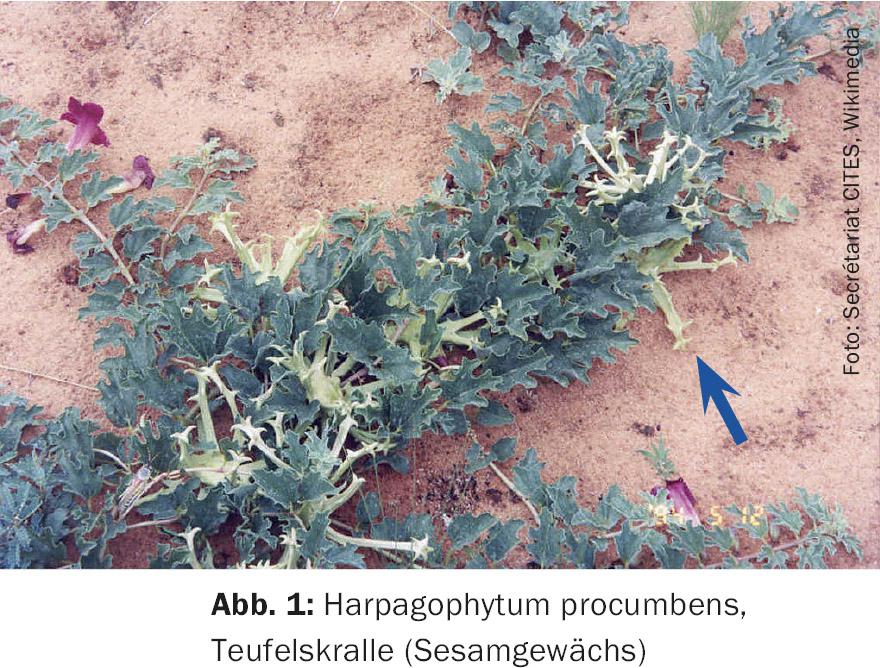
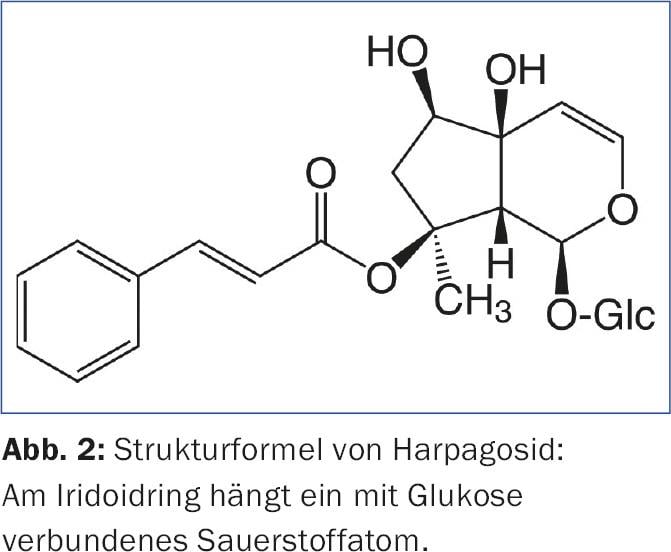
Pharmacological studies have demonstrated that extracts from devil’s claw roots cause NO and COX-2 inhibition by suppressing the transcription factor NF Kappa B [2,3].
Clinical studies
Standardized extracts of devil’s claw have been tested in clinical trials for various musculoskeletal complaints. Primarily, these were osteoarthritis, general rheumatic complaints, and lumbago.
A Cochrane Review published in 2014 [4] looked at various herbal treatments for lumbago, including Harpagophytum procumbens. Conclusion: “Although H. procumbens, S. alba, S. officinale L., S. chilensis, and lavender essential oil also seem to reduce pain more than placebo, evidence for these substances was of moderate quality at best. Additional well-designed large trials are needed to test these herbal medicines against standard treatments.” Knowing how critical the Cochrane Collaboration is of phytotherapy in general, such an assessment can almost be considered a distinction.
In another review study by Vlachojannis et al. [5], the safety of Harpagophytum preparations for the treatment of osteoarthritis and lumbago was investigated. Minimal side effects occurred in only about 3% of subjects in 28 studies, and these were primarily gastrointestinal complaints.
Warnock et al. published a study in 2007 [6] investigating the efficacy and safety of a devil’s claw extract for arthritis and other rheumatic conditions. Efficacy was found to be significant for the parameters “general pain”, “stiffness” and “functional capacity” (p<0.0001). Quality of life improved significantly from baseline, and 60% of study participants either discontinued or reduced concomitant analgesics.
The efficacy of devil’s claw in osteoarthritis has been investigated in various clinical studies, including Chrubasik et al. [7] in patients with hip and knee osteoarthritis. Compared with baseline, an improvement of 54% was determined for hip osteoarthritis and 38% for knee osteoarthritis. Patients received a dose of 60 mg of devil’s claw extract daily for eight weeks.
Summary
The medicinal plant Harpagophytum procumbens, also known as devil’s claw, which originated in southern Africa, has been discovered and studied by Western medicine in the last 20 years. Various clinical studies document the effectiveness of devil’s claw extracts in patients suffering from osteoarthritis, especially of the hip and knee joints, or general rheumatic complaints. These preparations can therefore be used as a supplement or as an alternative to conventional therapies.
Literature:
- D’Anastasio R, Capasso L: Post-microtraumatic cervical osteoarthritis in a cretaceous dinosaur. Reumatismo 2004; 56(2): 124-128.
- Kaszkin M, et al: Downregulation of iNOS expression in rat mesangial cells by special extracts.
of Harpagophytum procumbens derives from harpagoside-dependent and independent effects. Phytomedicine 2004; 11: 585-595. - Huang TH, et al: Harpagoside supresses lipopolysaccharide-induced iNOS and COX-2 expression through inhinbition of NF-kappa B activation. J Ethnopharmacol 2006; 104: 149-155.
- Oltean H, et al: Herbal medicine for low-back pain. Cochrane Database Syst Rev 2014 Dec 23; 12: CD004504.
- Vlachojannis J, Roufogalis BD, Chrubasik S: Systematic review on the safety of Harpagophytum preparations for osteoarthritic and low back pain. Phytother Res 2008 Feb; 22(2): 149-152.
- Warnock M, et al: Effectiveness and safety of devil’s claw tablets in patients with general rheumatic disorders. Phytother Res 2007; 21: 1228-1233.
- Chrubasik S, et al.: Comparision of outcome measures during treatment with the proprietary Harpagophytum extract Doloteffin in patients with pain in the lower back, knee or hip. Phytomedicine 2002; 9: 181-194.
HAUSARZT PRAXIS 2016; 11(1): 2


